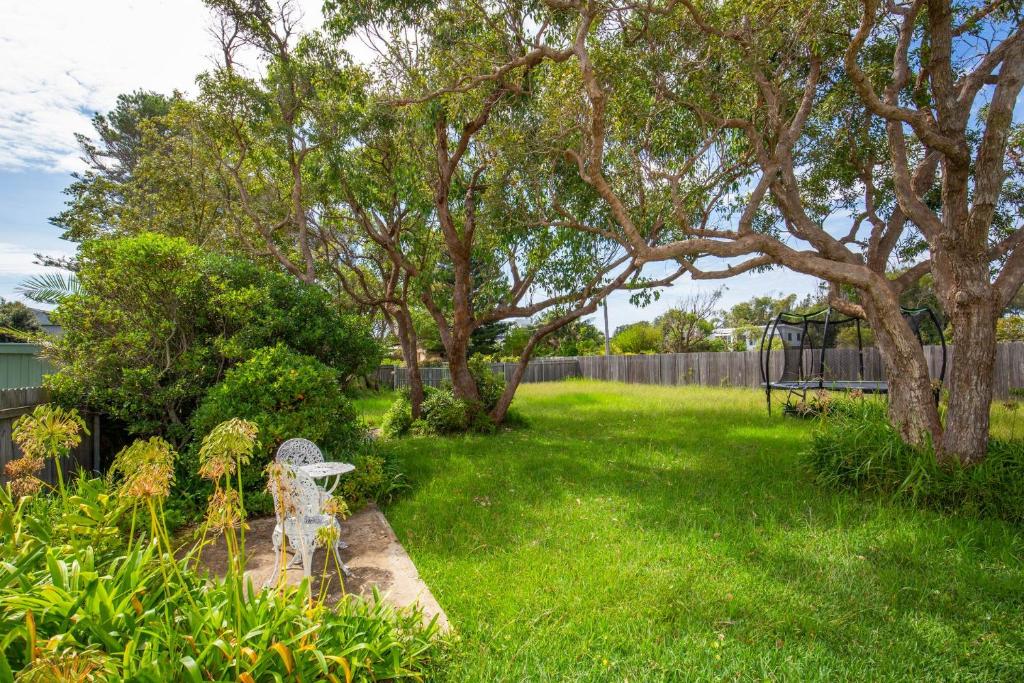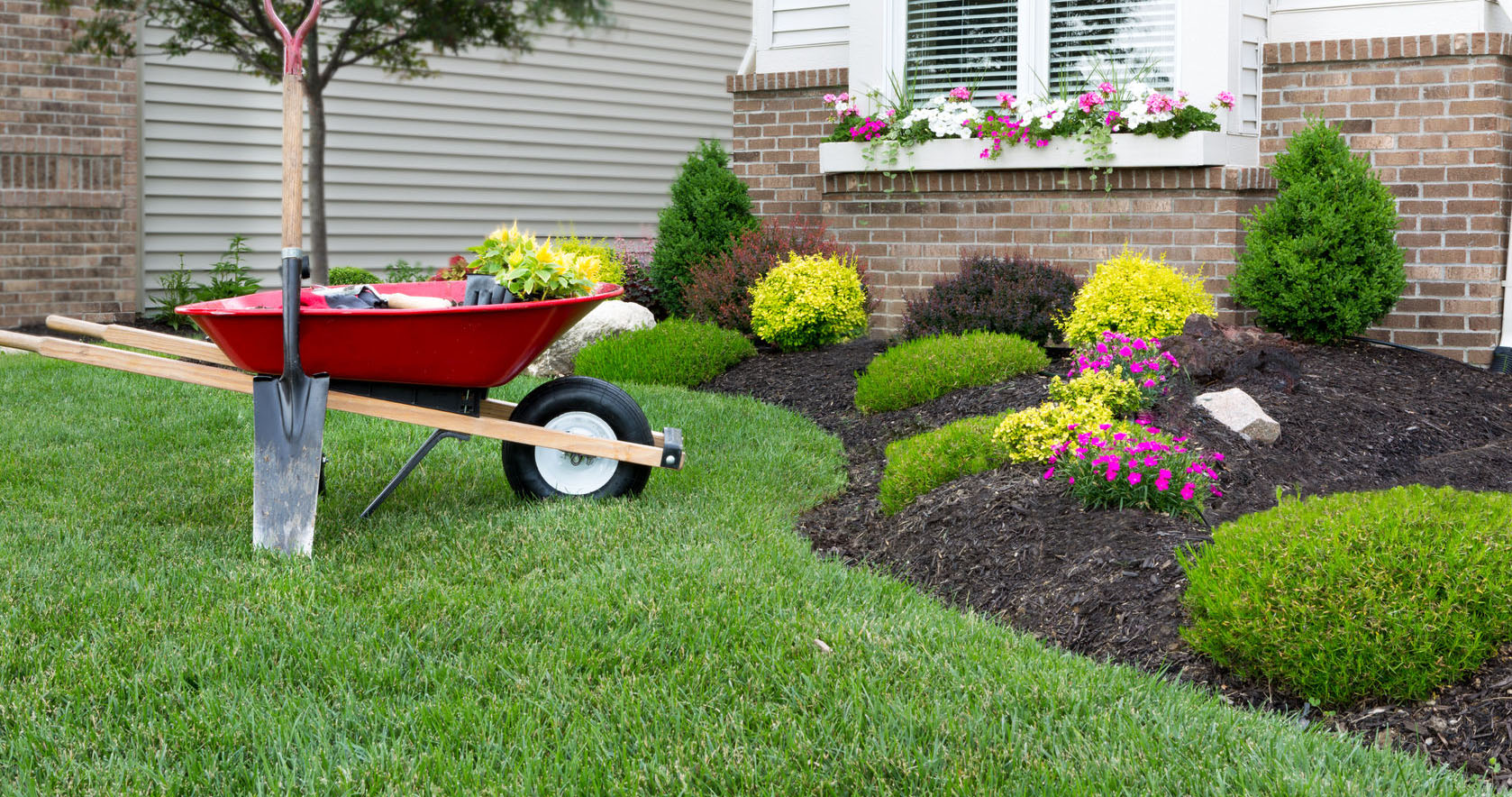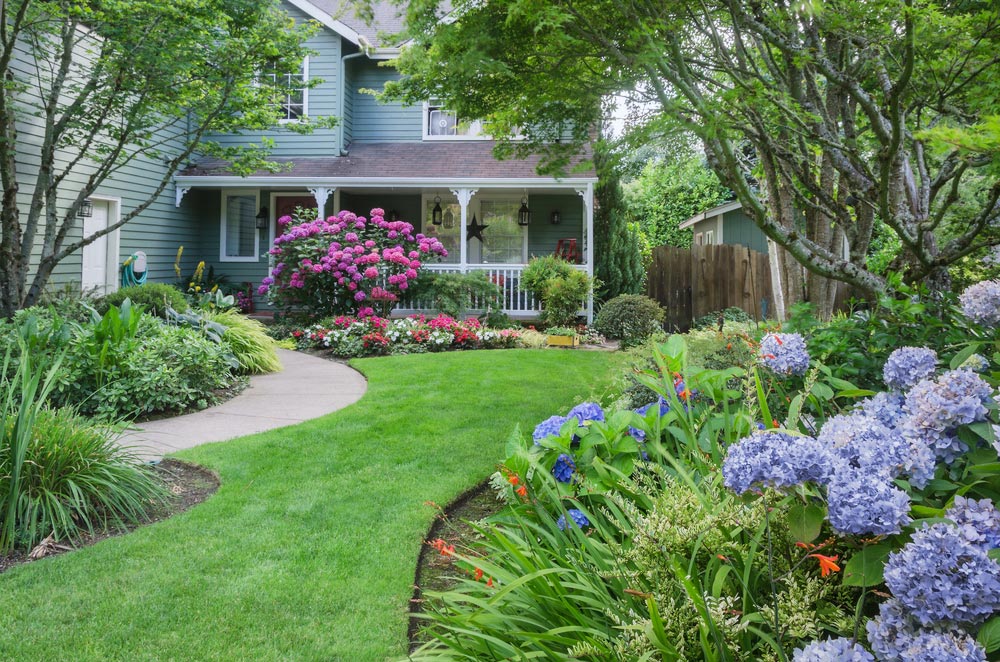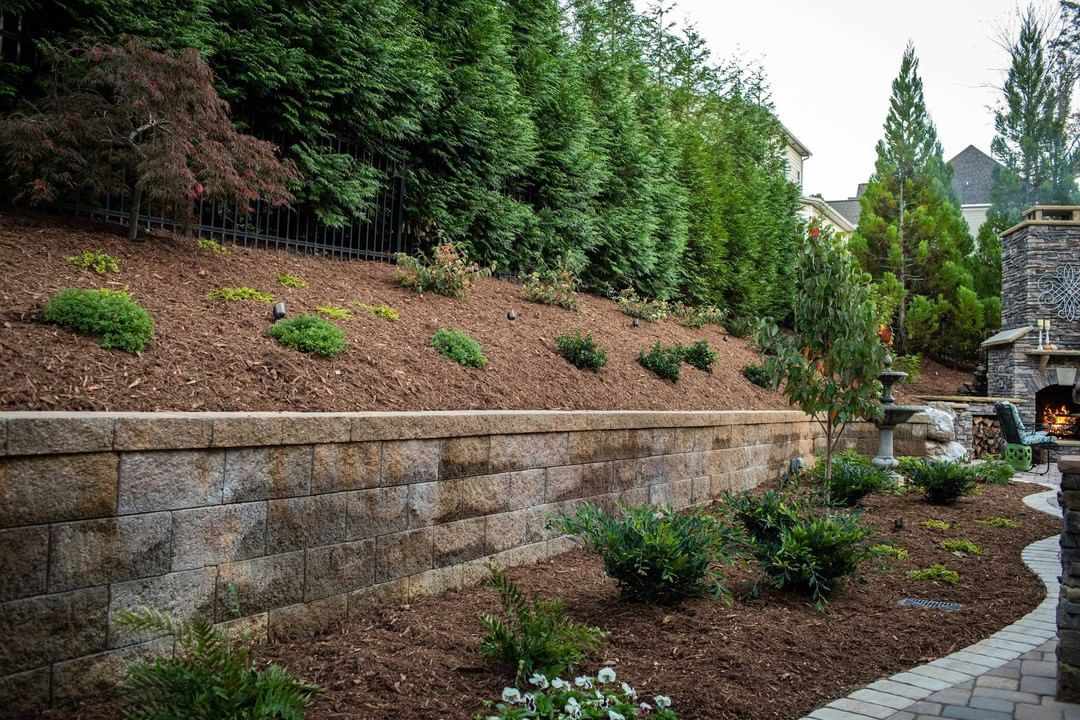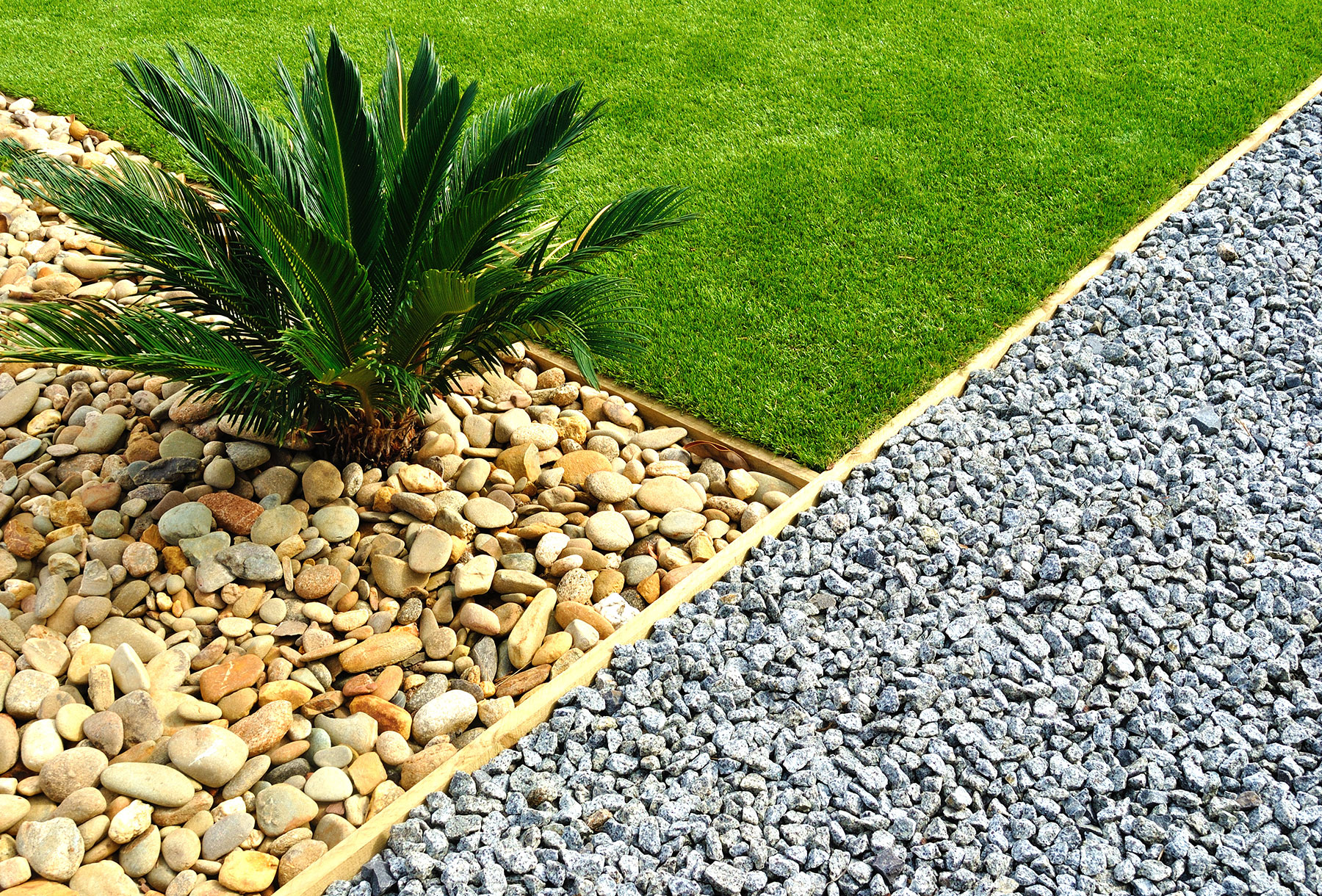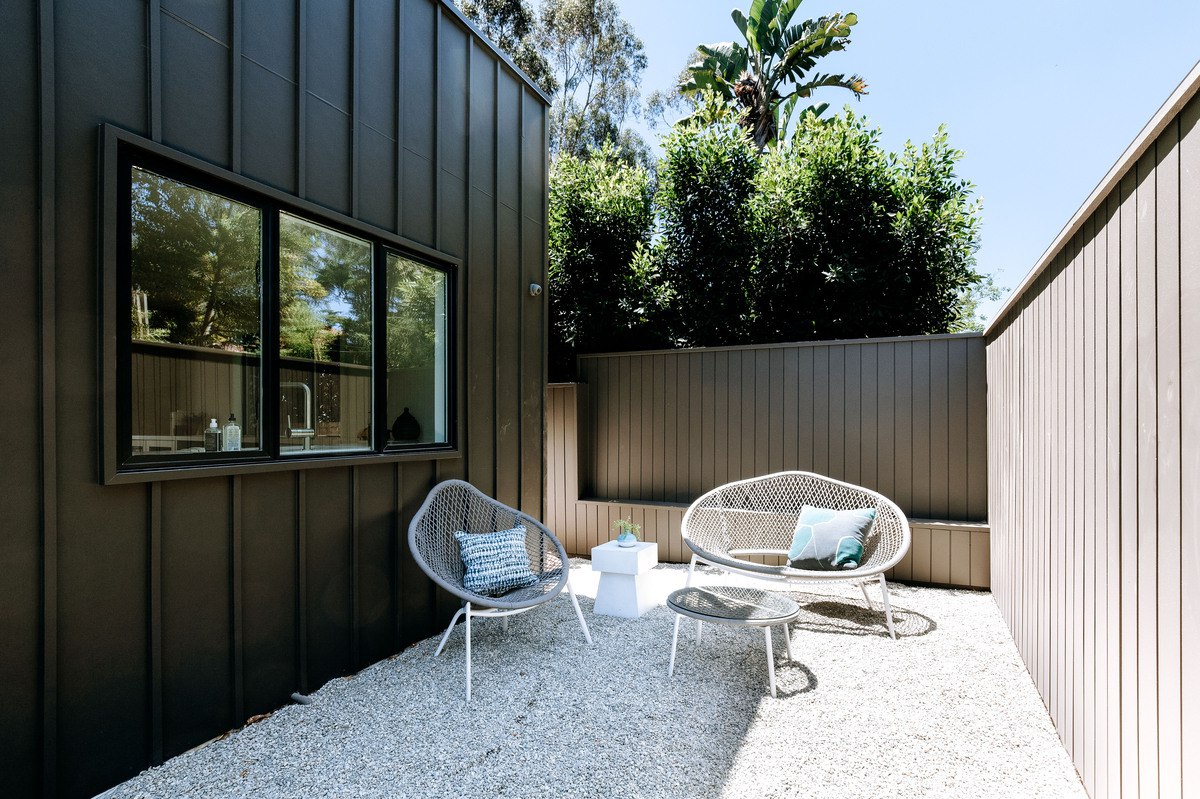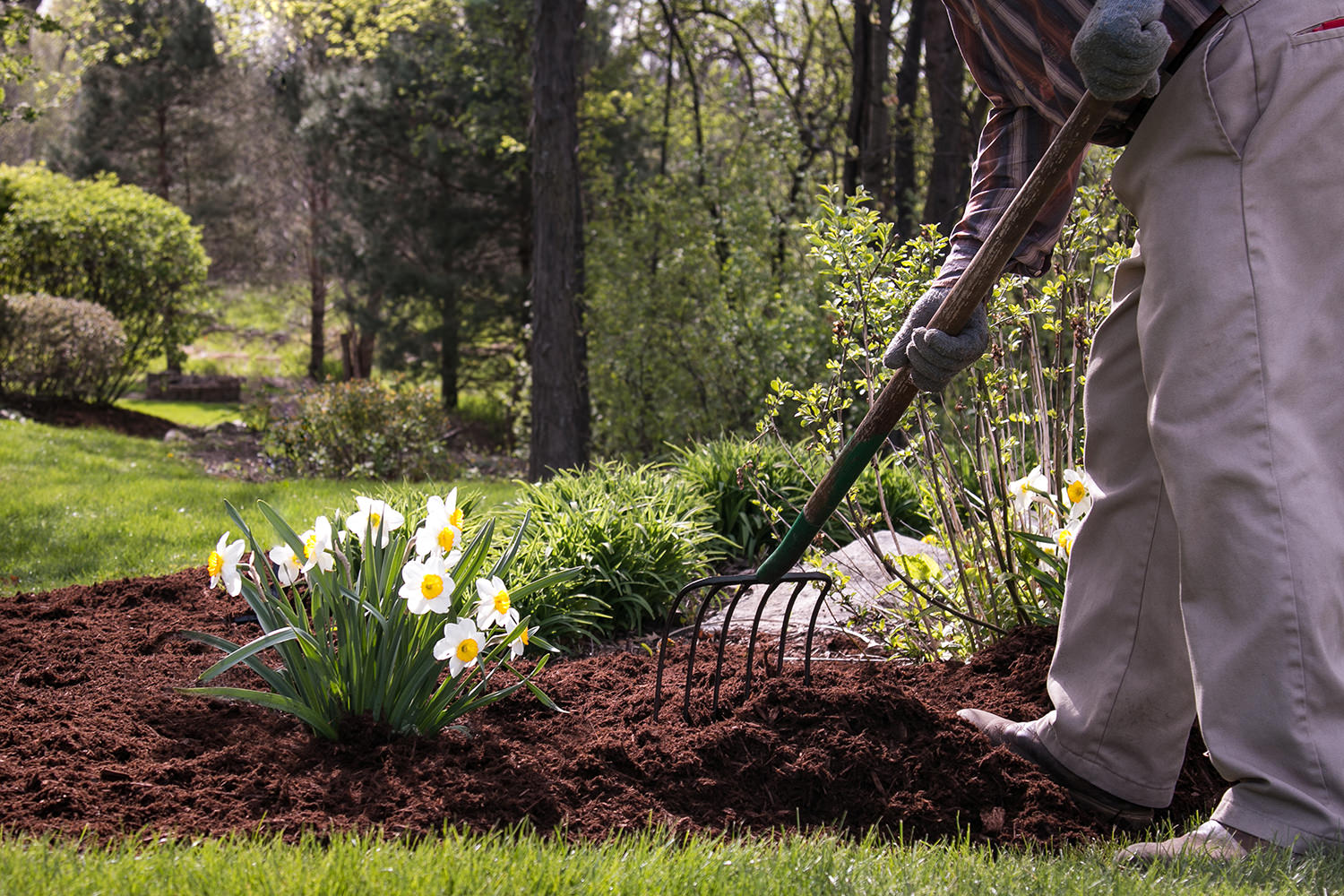Home>Gardening News and Trends>Latest News>What Division Is Landscaping In Construction


Latest News
What Division Is Landscaping In Construction
Modified: January 22, 2024
Discover the Latest News in the Construction Industry: What Division Is Landscaping In Construction? Get insights into the role of landscaping in the construction sector and stay updated with the latest trends and developments.
(Many of the links in this article redirect to a specific reviewed product. Your purchase of these products through affiliate links helps to generate commission for Chicagolandgardening.com, at no extra cost. Learn more)
Table of Contents
- Introduction
- Definition of Landscaping
- Role of Landscaping in Construction Projects
- Importance of Landscaping in Construction
- Integration of Landscaping in Construction Phases
- Types of Landscaping in Construction
- Benefits of Incorporating Landscaping in Construction Projects
- Challenges in Implementing Landscaping in Construction
- Best Practices for Landscaping in Construction
- Conclusion
Introduction
Landscaping plays a crucial role in the construction industry, adding aesthetic value and functionality to both residential and commercial projects. It involves the art and science of designing, installing, and maintaining outdoor spaces, creating harmony between buildings and nature. From lush gardens and inviting pathways to sustainable drainage systems and green roofs, landscaping is an integral part of the construction process.
Landscaping encompasses a wide range of elements, including plants, trees, hardscapes, water features, and lighting installations. These components work together to create visually appealing and functional outdoor spaces that enhance the overall experience and usability of a construction project.
Whether it’s a residential neighborhood, office complex, or public park, landscaping not only enhances the beauty of the surroundings but also contributes to environmental sustainability. It promotes the use of green materials, reduces water consumption, mitigates the urban heat island effect, and improves air quality. Moreover, landscaping can also increase property value, attract potential buyers or tenants, and create a welcoming and peaceful environment.
Throughout the construction process, landscaping is integrated into various phases, from initial design and planning to installation and ongoing maintenance. It requires collaboration between architects, landscape designers, contractors, and maintenance personnel to ensure that the vision for the outdoor space is executed effectively.
Implementing landscaping in construction projects does come with its challenges, such as ensuring proper irrigation, selecting suitable plant species for the climate, and managing any potential conflicts with utility systems. However, with careful planning, attention to detail, and adherence to best practices, these challenges can be overcome, resulting in successful and visually stunning landscapes that enhance the overall construction project.
In this article, we will explore the role of landscaping in construction projects and the importance of integrating landscaping into the various phases of construction. We will also discuss the different types of landscaping commonly seen in construction and the benefits it brings. Additionally, we will highlight the challenges that arise in implementing landscaping and provide best practices to overcome these obstacles.
Definition of Landscaping
Landscaping refers to the profession and practice of designing, creating, and maintaining outdoor spaces, with the goal of enhancing their aesthetic appeal, functionality, and overall quality. It involves the strategic arrangement of various natural and artificial elements, such as plants, trees, flowers, lawns, pathways, water features, and structures, to create harmonious and visually pleasing outdoor environments.
Landscaping is not limited to residential properties but extends to commercial, industrial, and public spaces as well. It encompasses a wide range of activities, including site assessment, conceptualization, planning, implementation, and ongoing maintenance. Professionals in the field, such as landscape architects, designers, and contractors, use their expertise and skills to transform outdoor spaces into beautiful, sustainable, and functional areas.
The practice of landscaping dates back centuries, with early examples found in ancient civilizations such as the Hanging Gardens of Babylon and the gardens of Versailles. Over time, landscaping has evolved to incorporate modern design principles, environmental considerations, and technological advancements. Today, it is an integral part of the construction industry, as it adds value, charm, and functionality to residential and commercial properties.
Landscaping encompasses both softscaping and hardscaping elements. Softscaping refers to the use of plants, trees, shrubs, flowers, and other living components to enhance the visual appeal and ecological balance of outdoor spaces. It involves selecting appropriate plant species, considering factors such as soil types, climate, and maintenance requirements. Hardscaping, on the other hand, involves the use of non-living elements like pathways, patios, walls, gazebos, and water features to provide structure, organization, and functionality to outdoor spaces.
Additionally, landscaping incorporates principles of sustainability and environmental consciousness. It includes practices such as water conservation, use of native and drought-resistant plants, implementation of efficient irrigation systems, and incorporation of sustainable materials. These measures not only reduce the environmental impact but also contribute to long-term cost savings and resource efficiency.
In summary, landscaping is a multifaceted discipline that blends art, science, and practicality to create visually appealing, functional, and sustainable outdoor spaces. It involves the strategic placement of natural and artificial elements, careful selection of plant species, consideration of environmental factors, and ongoing maintenance to create beautiful landscapes that enhance the overall quality of construction projects.
Role of Landscaping in Construction Projects
Landscaping plays a pivotal role in construction projects, contributing to the overall success and quality of the built environment. It goes beyond mere aesthetics, offering numerous benefits and serving various important functions throughout the construction process. Here, we explore the key roles that landscaping plays in construction projects.
First and foremost, landscaping serves as a means to enhance the visual appeal of a construction project. Well-designed and well-maintained landscapes create a positive first impression, attracting potential buyers, tenants, or visitors. The artful arrangement of plants, trees, and hardscape elements complements the architectural design of the buildings, providing a harmonious and inviting atmosphere.
Additionally, landscaping provides functional benefits to construction projects. It helps to create usable outdoor spaces for recreational activities, social gatherings, and relaxation. From parks and gardens to courtyards and rooftops, these outdoor spaces enhance the overall experience of building occupants, providing areas for exercise, meditation, or simply enjoying nature.
Furthermore, landscaping is instrumental in improving environmental sustainability. Through the integration of green infrastructure and sustainable practices, it helps mitigate environmental issues that arise from extensive construction activities, such as stormwater management, erosion control, and air pollution. Elements like rain gardens, permeable pavements, and green roofs enhance water absorption, reduce runoff, and improve air quality, making construction projects more environmentally friendly.
Landscaping also contributes to the overall well-being and health of building occupants. Access to green spaces has been linked to enhanced physical and mental well-being, decreasing stress levels, and improving cognitive performance. Incorporating nature-inspired elements into construction projects, such as biophilic design principles, can improve indoor air quality, reduce noise pollution, and foster a connection with the natural world.
Besides these benefits, landscaping can increase property value. Well-designed landscapes add curb appeal and desirability to buildings, attracting potential buyers or tenants and commanding higher prices. An investment in quality landscaping can yield substantial returns, making it an integral aspect of construction projects, particularly in the real estate industry.
Overall, landscaping plays an essential role in construction projects by enhancing visual appeal, providing functional outdoor spaces, improving environmental sustainability, and boosting property value. Integrating landscaping into the construction process ensures the creation of aesthetically pleasing, sustainable, and enjoyable environments for building occupants and the surrounding community.
Importance of Landscaping in Construction
Landscaping is of utmost importance in construction projects, as it adds value, functionality, and numerous benefits to the built environment. It goes beyond mere aesthetics and serves as an integral component in enhancing the overall quality and success of construction ventures. Here, we explore the significance of landscaping in construction.
One of the key aspects of landscaping is its ability to enhance the visual appeal of a construction project. A well-designed landscape creates a positive first impression and adds a touch of beauty to the surrounding environment. The thoughtful arrangement of plants, trees, pathways, and other elements complements the architectural design and creates a harmonious balance between the built structures and nature. This aesthetic appeal not only attracts potential buyers or tenants but also uplifts the overall ambiance of the space.
Functionality is another significant aspect of landscaping in construction. Outdoor spaces, whether they are gardens, courtyards, or rooftops, can be transformed into functional areas for relaxation, socializing, or recreational activities. These spaces contribute to the overall well-being and satisfaction of building occupants, providing opportunities for exercise, solitude, or connection with nature. By creating outdoor living spaces that seamlessly blend with the indoor environment, landscaping enhances the overall user experience of a construction project.
Environmental sustainability is a critical consideration in contemporary construction, and landscaping plays a vital role in achieving this goal. By incorporating green infrastructure, sustainable materials, and efficient irrigation systems, landscaping helps mitigate environmental issues and promote ecological balance. Elements such as rain gardens, bioswales, and native plantings not only enhance water management and reduce stormwater runoff but also support biodiversity and conservation efforts. Landscaping also contributes to improving air quality by creating green buffers and filtering pollutants, thus creating healthier and more sustainable environments.
Moreover, landscaping has a positive impact on property value. Well-maintained and attractive landscapes significantly increase the curb appeal of a property, making it more desirable to potential buyers or tenants. Studies have shown that properties with well-designed landscapes tend to command higher selling prices and rental rates, thus leading to increased return on investment. By investing in professional landscaping services, property owners can significantly enhance the value and marketability of their construction projects.
Lastly, landscaping plays a crucial role in fostering a sense of community and well-being. Public parks, gardens, and communal outdoor areas provide spaces for social interactions, community events, and recreational activities. These green spaces promote social cohesion, improve mental health, and offer places for people to reconnect with nature and each other. In addition, landscaping can contribute to creating a distinct sense of identity and character for a community or neighborhood, enhancing its overall livability and attractiveness.
In summary, landscaping is of paramount importance in construction projects as it enhances visual appeal, provides functional outdoor spaces, promotes environmental sustainability, increases property value, and fosters community well-being. By incorporating thoughtful and well-executed landscaping into construction ventures, developers and property owners can create spaces that are not only visually pleasing but also sustainable, functional, and economically valuable.
Integration of Landscaping in Construction Phases
Integrating landscaping into the various phases of construction is essential to ensure a cohesive and successful project. From the initial design and planning stages to the final installation and ongoing maintenance, landscaping plays a crucial role in enhancing the aesthetic appeal, functionality, and overall quality of the constructed environment. Here, we explore how landscaping is integrated into different phases of construction.
Design and Planning: The first phase of integrating landscaping into construction is during the design and planning stage. Architects, landscape designers, and other professionals collaborate to create a comprehensive site plan that incorporates both the built structures and outdoor spaces. Factors such as site analysis, environmental considerations, and the client’s preferences are taken into account to develop a landscape design that complements the architectural vision. This phase also includes selecting suitable plant species, adjusting the topography if needed, and designing hardscape elements in harmony with the overall design concept.
Pre-construction: Prior to the start of construction, site preparation plays a crucial role in ensuring a smooth integration of landscaping elements. This phase involves clearing and grading the site, making any necessary adjustments to prepare the land for the installation of landscape features. It may also include soil testing and amendments to provide a suitable foundation for plants and trees to thrive.
Construction: The construction phase is when the foundation is laid, and the landscape design starts to take shape. During this time, it is important to protect the existing landscape elements, such as mature trees or natural features that may be incorporated into the design. Additionally, hardscape elements, such as pathways, patios, and retaining walls, are constructed according to the design plans. Collaboration between the construction team and landscape professionals is crucial to ensure that the outdoor elements are integrated seamlessly with the overall construction process.
Planting and Installation: As the construction progresses, the planting and installation phase begins. This is when trees, shrubs, flowers, and other vegetation specified in the design plan are planted, and hardscape features such as benches, fountains, and lighting fixtures are installed. Care is taken to ensure proper planting techniques, watering, and soil preparation to promote healthy growth and long-term vitality of the landscape elements.
Maintenance and Ongoing Care: Once the construction is complete, the landscape requires ongoing maintenance and care to ensure its vitality and longevity. Regular maintenance activities may include mowing, pruning, fertilizing, irrigation system inspection and repairs, and pest control. Monitoring the landscape’s health and making any necessary adjustments or replacements are critical to ensure that the landscaping continues to enhance the overall aesthetics and functionality of the construction project.
Throughout the entire construction process, effective communication, collaboration, and coordination between various professionals involved, including architects, landscape designers, contractors, and maintenance personnel, are crucial for the seamless integration of landscaping elements. By incorporating landscaping into each phase, from design to installation and ongoing maintenance, developers and property owners can ensure that the outdoor spaces not only align with the architectural vision but also enhance the overall quality and success of the construction project.
Types of Landscaping in Construction
Landscaping in construction projects encompasses a variety of elements and design styles that can transform outdoor spaces into beautiful and functional environments. From the lush greenery of gardens to the elegant simplicity of modern landscapes, different types of landscaping can be implemented depending on the desired aesthetic, purpose, and site conditions. Here, we explore some common types of landscaping in construction.
1. Traditional Landscaping: Traditional landscaping often features formal designs characterized by symmetrical patterns, geometric shapes, and well-defined edges. It incorporates elements such as manicured lawns, flowerbeds, trimmed hedges, and structured pathways. Traditional landscaping is popular in residential and commercial settings, adding a classic and timeless appeal to the surroundings.
2. Ecological Landscaping: Ecological or sustainable landscaping focuses on creating environmentally friendly and low-maintenance outdoor spaces. It emphasizes the use of native plants, which are well adapted to the local climate and require less water and maintenance. Ecological landscaping also incorporates elements like rain gardens, green roofs, and permeable surfaces to improve water management and reduce stormwater runoff.
3. Water-wise Landscaping: Water-wise, or xeriscaping, aims to minimize water usage while still maintaining an attractive landscape. It utilizes drought-tolerant plants, gravel or mulch ground covers, and efficient irrigation systems to reduce water consumption. This type of landscaping is especially beneficial in arid regions or areas facing water scarcity, as it helps conserve water resources.
4. Contemporary Landscaping: Contemporary landscaping features clean lines, minimalism, and a focus on open spaces. It often incorporates modern materials such as concrete, metal, and glass, alongside bold plantings and artistic hardscape elements. Contemporary landscapes are popular in urban environments and projects with a modern architectural style.
5. Edible Landscaping: Edible landscaping combines both aesthetic appeal and functionality by incorporating edible plants into the landscape design. It includes vegetable gardens, fruit trees, and herbs integrated into flower beds or containers. Edible landscaping not only provides a source of fresh produce but also adds visual interest and diversity to the outdoor space.
6. Hardscape-focused Landscaping: Hardscape-focused landscaping emphasizes the use of non-living elements to create structure and functionality in outdoor spaces. This type of landscaping includes elements such as patios, decks, retaining walls, pergolas, and water features. It strikes a balance between softscape and hardscape elements, creating visually appealing and functional outdoor living areas.
7. Japanese Garden Landscaping: Inspired by traditional Japanese garden designs, this type of landscaping focuses on creating serene and harmonious environments. Japanese gardens often feature carefully selected plantings, rock formations, water features, and meditation spaces. They emphasize balance, simplicity, and the contemplation of nature.
These are just a few examples of the types of landscaping commonly seen in construction projects. However, each project is unique, and the type of landscaping chosen depends on factors such as the project’s purpose, location, architectural style, and the preferences of the property owners. By selecting the right type of landscaping and incorporating it into the construction process, developers and property owners can create visually stunning, functional, and sustainable outdoor spaces that enhance the overall quality of the project.
Benefits of Incorporating Landscaping in Construction Projects
Incorporating landscaping into construction projects offers a wide range of benefits, both tangible and intangible. From enhancing the aesthetic appeal to improving environmental sustainability, landscaping plays a crucial role in creating visually appealing and functional outdoor spaces. Here, we explore the key benefits of incorporating landscaping in construction.
1. Visual Appeal: One of the primary benefits of landscaping is its ability to enhance the visual appeal of a construction project. Well-designed landscapes create a positive first impression, attracting potential buyers, tenants, or visitors. Thoughtfully arranged elements such as plants, trees, pathways, and water features create a harmonious and inviting atmosphere that complements the architectural design of the buildings. A visually appealing landscape adds value and charm to the surrounding environment.
2. Increased Property Value: Landscaping significantly contributes to increasing property value. Well-designed and well-maintained landscapes enhance curb appeal, making a property more desirable to potential buyers or tenants. Studies have shown that properties with attractive and functional landscapes command higher selling prices and rental rates. Investing in quality landscaping can lead to substantial returns on investment and a competitive edge in the real estate market.
3. Improved Environmental Sustainability: Landscaping plays a crucial role in promoting environmental sustainability. By incorporating green infrastructure and sustainable practices, landscaping contributes to mitigating various environmental issues. Elements like rain gardens, green roofs, and permeable pavements help manage stormwater runoff and reduce water consumption. Additionally, proper plant selection, efficient irrigation systems, and utilization of native plants contribute to conserving water resources and supporting local ecosystems.
4. Enhanced Well-being and Health: Access to green spaces has been proven to have a positive impact on well-being and health. Landscaping provides opportunities for outdoor recreational activities, exercise, and relaxation, which are crucial for physical and mental well-being. Exposure to nature has been shown to reduce stress, improve mood, and increase cognitive function. Incorporating elements of nature into the built environment, such as biophilic design principles, can improve indoor air quality, reduce noise pollution, and create a sense of connection with the natural world.
5. Functional Outdoor Spaces: Landscaping creates functional outdoor spaces that enhance the overall experience for building occupants. Gardens, courtyards, rooftops, and other outdoor areas offer places for relaxation, socialization, and recreational activities. These spaces provide opportunities for individuals and communities to connect with nature and each other, fostering a sense of well-being and community cohesion.
6. Ecosystem Support: Landscaping contributes to supporting local ecosystems by providing habitats for wildlife and promoting biodiversity. Plantings that attract pollinators, such as bees and butterflies, help in the preservation of essential ecosystem services. Sustainable landscaping practices, such as composting, organic fertilizers, and responsible pest management, minimize harm to the environment and contribute to the overall health of ecosystems.
7. Urban Heat Island Mitigation: Landscaping can play a role in mitigating the urban heat island effect. Well-placed trees and vegetation provide shade, reduce surface temperatures, and cool the surrounding environment. This helps create more comfortable and energy-efficient spaces, reducing the reliance on artificial cooling methods.
Incorporating landscaping into construction projects offers numerous benefits, including enhanced visual appeal, increased property value, improved environmental sustainability, enhanced well-being and health, functional outdoor spaces, ecosystem support, and urban heat island mitigation. These benefits make landscaping an integral part of any successful and holistic construction project.
Challenges in Implementing Landscaping in Construction
While incorporating landscaping in construction projects offers numerous benefits, it also comes with its fair share of challenges. From site constraints to maintenance requirements, several factors can pose obstacles in implementing landscaping effectively. It is essential to be aware of these challenges to ensure successful integration of landscaping into construction projects. Here, we explore the key challenges that arise in implementing landscaping in construction.
1. Site Conditions: Site conditions play a significant role in determining the success of landscaping in construction. Factors such as soil composition, drainage patterns, and topography can pose challenges when selecting appropriate plant species and designing irrigation systems. Construction activities may also disrupt existing soil structures, requiring remediation or amendments to ensure optimal growing conditions for plants and trees.
2. Utility Systems: Integrating landscaping requires careful consideration of existing utility systems, such as underground wiring, pipelines, and drainage systems. Coordination with utility providers is essential to avoid conflicts or damages during the installation of hardscape elements or excavation for planting. Proper planning and collaboration between the landscaping and construction teams are necessary to ensure that utility systems are not compromised in the process.
3. Maintenance Requirements: Landscaping in construction projects requires ongoing maintenance to preserve its beauty and functionality. Regular activities such as watering, mowing, pruning, fertilizing, and pest control are necessary to keep the landscape healthy and vibrant. The challenge lies in ensuring that proper maintenance practices are followed consistently to prevent issues such as overwatering, neglect, or improper pruning, which can negatively affect the landscape’s long-term health and aesthetics.
4. Plant Selection: Selecting the right plant species is crucial to ensure the success of landscaping in construction. Factors such as climate, soil types, sun exposure, and maintenance requirements must be considered when choosing plants. Inappropriate plant selection can lead to poor growth, increased maintenance needs, or the risk of plant diseases and pests. Proper research, consultation with experts, and adherence to local regulations and guidelines are necessary to select plants that are well-suited to the site conditions.
5. Water Availability and Efficiency: Water availability and efficiency are significant challenges in implementing landscaping, especially in regions facing water scarcity. Proper irrigation design, utilizing efficient irrigation systems such as drip irrigation or smart controllers, and utilizing drought-tolerant plant species are essential to conserve water resources. However, striking a balance between water conservation and providing adequate hydration to the landscape can be a challenge that requires careful monitoring and adjustments.
6. Budget Constraints: Budget constraints can pose challenges in implementing landscaping in construction projects. Landscaping requires investments in design, plant materials, hardscape elements, irrigation systems, and ongoing maintenance. Limited budgets may result in compromising on certain landscaping aspects, reducing the overall impact and effectiveness of the landscape design. It is important to allocate sufficient resources to landscaping to ensure its successful implementation.
7. Timing and Seasonality: Incorporating landscaping involves working with living elements, which are subject to seasonal influences. Proper timing is crucial for planting, pruning, and other maintenance activities to ensure optimal growth and health. Construction timelines and seasonal constraints may require adjustments in scheduling to accommodate the needs of landscaping, such as avoiding extreme weather conditions or integrating the planting of specific plants during the appropriate season.
Awareness of these challenges and proactive planning is essential to overcome and address potential obstacles in implementing landscaping in construction projects. Effective communication, collaboration between the landscaping and construction teams, and adherence to best practices can help mitigate these challenges and ensure successful integration of landscaping into the built environment.
Best Practices for Landscaping in Construction
Implementing landscaping in construction projects requires careful planning, coordination, and adherence to best practices. By following these practices, developers, architects, and landscape professionals can create visually stunning and sustainable outdoor spaces. Here are some best practices for landscaping in construction.
1. Early Integration: It is crucial to involve the landscape designer or architect early in the project to ensure proper integration of landscaping elements. By incorporating the landscape design into the overall project plan from the beginning, conflicts with utility systems, site grading, or construction activities can be identified and addressed promptly, avoiding costly redesign or delays.
2. Site Analysis and Planning: Conduct a comprehensive site analysis to understand the soil conditions, drainage patterns, sun exposure, and microclimates. This analysis helps determine the appropriate plant selection, irrigation needs, and hardscape placement. A well-planned landscape design that considers site-specific factors will ensure the long-term success and sustainability of the landscape.
3. Sustainable Design: Emphasize sustainability in the landscape design by incorporating green infrastructure and sustainable practices. Incorporate elements such as rain gardens, green roofs, permeable pavements, and efficient irrigation systems to manage stormwater, conserve water, improve biodiversity, and reduce environmental impact. Utilize native and drought-tolerant plant species to minimize water requirements and support local ecosystems.
4. Proper Plant Selection: Select plants that are well-suited to the site conditions, including climate, soil types, and sun exposure. Consider factors such as water requirements, maintenance needs, and desired aesthetic qualities when choosing plants. Using a diverse mix of plant species can enhance biodiversity and provide visual interest throughout the seasons.
5. Irrigation Efficiency: Design and install efficient irrigation systems that minimize water waste and promote water conservation. Utilize technologies such as drip irrigation, weather-based controllers, and soil moisture sensors to ensure that plants receive the right amount of water at the appropriate times. Regularly monitor and adjust the irrigation system to meet the changing needs of the landscape.
6. Quality Maintenance: Ongoing maintenance is crucial for the long-term health and beauty of the landscape. Develop a comprehensive maintenance plan that includes regular watering, pruning, fertilizing, and pest control practices. Train maintenance staff or hire professionals who are knowledgeable in proper landscape care techniques. Regular inspections and proactive management of potential problems can help prevent issues from escalating.
7. Collaboration and Communication: Effective communication and collaboration between the various teams involved in the construction and landscaping process are essential. Regular meetings and clear communication channels ensure that everyone is aligned with the project’s goals and timelines. Coordinate site activities to minimize disruption to the landscape and address any potential conflicts or issues proactively.
8. Compliance with Regulations: Ensure compliance with local building codes, environmental regulations, and permit requirements. Familiarize yourself with any specific regulations governing landscaping practices in your area. This includes adhering to guidelines related to water usage, plant species selection, stormwater management, and construction-related activities that may impact the landscape.
9. Education and Training: Stay informed about new trends, technologies, and best practices in landscaping. Encourage ongoing education and training for all individuals involved in the landscaping process. This ensures that the latest industry knowledge is applied, and innovative approaches are considered, resulting in landscapes that are up-to-date and sustainable.
By following these best practices, construction projects can successfully integrate landscaping that enhances the visual appeal, functionality, and sustainable features of the built environment. Implementing these practices ensures that the landscape thrives and continues to contribute positively to the overall experience and quality of the construction project.
Conclusion
Landscaping is a vital aspect of construction projects, offering a multitude of benefits and opportunities to enhance the overall quality of the built environment. From enhancing visual appeal and increasing property value to improving environmental sustainability and promoting well-being, landscaping plays a crucial role in creating beautiful, functional, and sustainable outdoor spaces.
Throughout the construction process, integrating landscaping requires careful planning, coordination, and adherence to best practices. Early integration of landscape professionals, comprehensive site analysis, sustainable design principles, appropriate plant selection, efficient irrigation systems, and quality maintenance are key factors in ensuring successful implementation of landscaping in construction projects.
Despite the challenges that may arise, such as site conditions, utility systems, maintenance requirements, plant selection, budget constraints, timing, and seasonality, addressing them proactively can lead to the creation of visually stunning landscapes that add value and appeal to construction projects.
As the demand for well-designed, sustainable, and aesthetically pleasing outdoor spaces continues to grow, the role of landscaping in construction projects becomes even more crucial. By embracing the integration of landscaping and incorporating it into each phase of construction, developers, architects, and landscape professionals can create environments that promote harmony between the built structures and nature, benefitting not only the occupants but also the surrounding community and the environment as a whole.
In conclusion, landscaping in construction is much more than adding plants and flowers to the surroundings. It is an artful combination of design, functionality, and sustainability that enhances the overall experience, value, and quality of the constructed environment. By embracing the benefits of landscaping and implementing best practices, construction projects can leave a lasting legacy of beautiful, functional, and sustainable outdoor spaces for generations to come.

